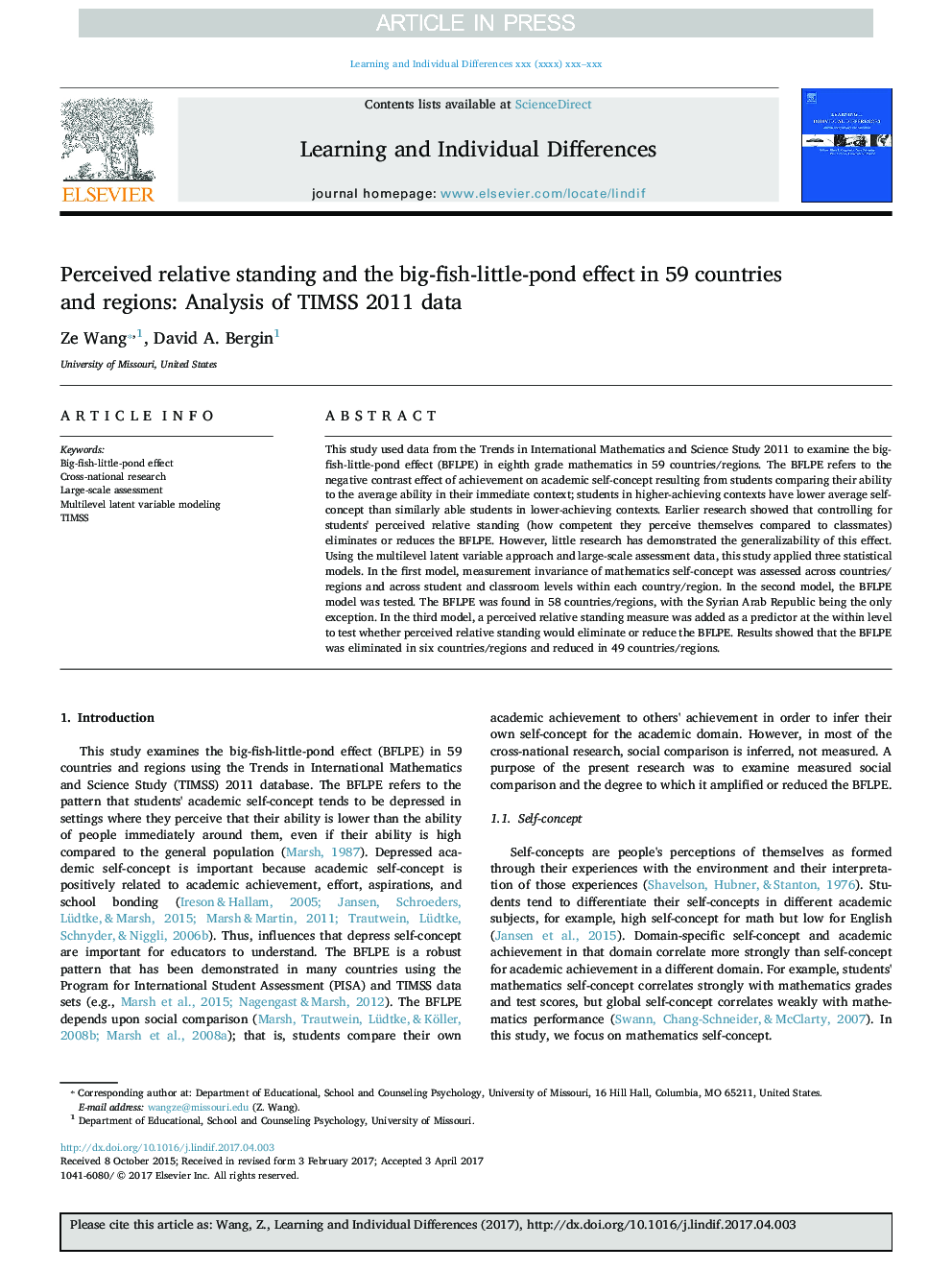| کد مقاله | کد نشریه | سال انتشار | مقاله انگلیسی | نسخه تمام متن |
|---|---|---|---|---|
| 4940010 | 1436366 | 2017 | 16 صفحه PDF | دانلود رایگان |
عنوان انگلیسی مقاله ISI
Perceived relative standing and the big-fish-little-pond effect in 59 countries and regions: Analysis of TIMSS 2011 data
دانلود مقاله + سفارش ترجمه
دانلود مقاله ISI انگلیسی
رایگان برای ایرانیان
کلمات کلیدی
موضوعات مرتبط
علوم انسانی و اجتماعی
روانشناسی
روانشناسی رشد و آموزشی
پیش نمایش صفحه اول مقاله

چکیده انگلیسی
This study used data from the Trends in International Mathematics and Science Study 2011 to examine the big-fish-little-pond effect (BFLPE) in eighth grade mathematics in 59 countries/regions. The BFLPE refers to the negative contrast effect of achievement on academic self-concept resulting from students comparing their ability to the average ability in their immediate context; students in higher-achieving contexts have lower average self-concept than similarly able students in lower-achieving contexts. Earlier research showed that controlling for students' perceived relative standing (how competent they perceive themselves compared to classmates) eliminates or reduces the BFLPE. However, little research has demonstrated the generalizability of this effect. Using the multilevel latent variable approach and large-scale assessment data, this study applied three statistical models. In the first model, measurement invariance of mathematics self-concept was assessed across countries/regions and across student and classroom levels within each country/region. In the second model, the BFLPE model was tested. The BFLPE was found in 58 countries/regions, with the Syrian Arab Republic being the only exception. In the third model, a perceived relative standing measure was added as a predictor at the within level to test whether perceived relative standing would eliminate or reduce the BFLPE. Results showed that the BFLPE was eliminated in six countries/regions and reduced in 49 countries/regions.
ناشر
Database: Elsevier - ScienceDirect (ساینس دایرکت)
Journal: Learning and Individual Differences - Volume 57, July 2017, Pages 141-156
Journal: Learning and Individual Differences - Volume 57, July 2017, Pages 141-156
نویسندگان
Ze Wang, David A. Bergin,